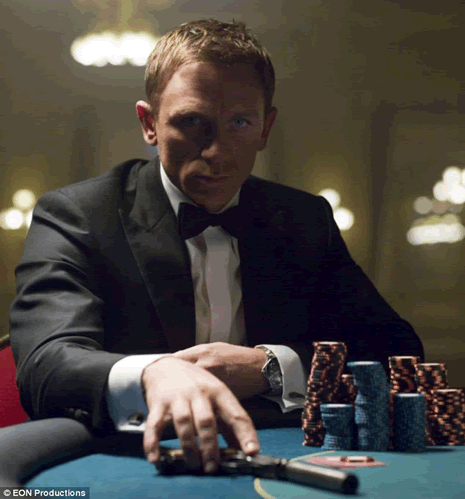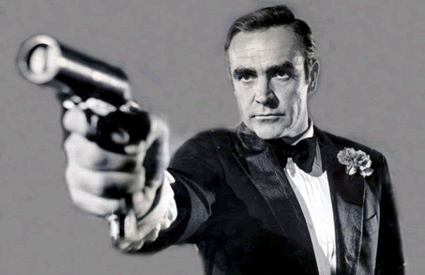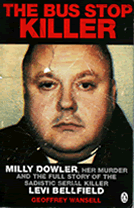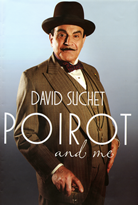
Geoffrey Wansell:
Daily Mail, 26 September 2013.
A new Bond book and, hurrah, he's back to his ruthless, bed hopping best!
• William Boyd's new book Solo features a heavy-smoking, hard-drinking James Bond set in the Sixties
• The author 'triumphantly' brings back 'the real Bond'
• Boyd is the seventh author to tackle 007 since Ian Fleming's death in 1964
His villainous arch-enemies may have tried to kill him off many times, but he always escaped to live another day.
Now, 60 years after Commander Bond of the British Secret Service was introduced to the world in Ian Fleming’s superb thriller Casino Royale, he has been given yet another incarnation.
This morning sees the publication of Solo, a new James Bond novel written by the Scots-born novelist William Boyd, the seventh author to have tried to bring Fleming’s spy back to life. But what is so extraordinary is that 61-year-old Boyd’s attempt is the first to have succeeded.

Back to his best: Geoffrey Wansell praises William Boyd's new book Solo as a return to form for James Bond (portrayed here by Daniel Craig) after a string of 'second-raters' in the 007 series
It is not as if those who have previously recreated Fleming’s hero have been second-raters.
The great Sir Kingsley Amis tried his hand. So did top U.S. thriller writer Jeffery Deaver, as well as one of our most brilliant novelists, Sebastian Faulks.
But all of them failed in one way or another. Amis was too much of a fan, so his descriptions of Bond were gushing and too detailed. Deaver lacked the quintessential Englishness and lightness of touch to make 007 leap off the page. Sebastian Faulks, meanwhile, was too sensitive a writer for the macho world of Bond.
In truth, producing a Bond sequel is one of the most daunting tasks any writer could ever undertake.
Ian Fleming was a master craftsman who lived and breathed the world of Bond, and he was of a very different age.
William Boyd launched his Bond novel in London on Wednesday, following in the footsteps of six other authors who have tried to bring Ian Fleming's iconic character back to life in print
A former naval intelligence officer and journalist, and the Eton-educated son of a Tory MP, Fleming died of heavy smoking and heavier drinking in 1964, four years before the current screen Bond, Daniel Craig, was even born.
With his licence to kill, 007 became one of the true British icons not only of the Sixties, but of all time — despite, or perhaps because of, the fact he was so politically incorrect, so shamelessly attracted to beautiful women and so insistent on his endless martinis (shaken, not stirred).
|
But William Boyd brings back the real Bond, triumphantly.
His first masterstroke was to set his story in 1969, giving Bond an age of 45, and allowing himself a rich palette of history and emotions to work with, for Bond was born in 1924 and served in the D-Day landings in 1944 as a young Lieutenant in 30 Assault Unit.

Flying high: The new Bond novel Solo was jetted to seven countries around the globe - Amsterdam, Edinburgh, Zurich, Los Angeles, Delhi, Cape Town, and Sydney - ahead of its release on Thursday.
Boyd cleverly pays tribute to Fleming by setting the story in an age when the spying game was full of flamboyance and style, and before John Le Carre and his fictional British spy Smiley made the world of espionage so comparatively grey and murky.
In his new novel, Boyd gives Bond the task of single-handedly stopping a bitter and tribal civil war in the fictional oil-rich West African state of Zanzarim.
This reflects the author’s own long-term fascination with that continent, which is clear for all to see in his first novel, A Good Man In Africa, published in 1981. The civil war does come to an end, but not so much as a result of Bond as the stain of political corruption that seeps through Boyd’s dark story.
Boyd is not afraid to make Bond as politically incorrect as Fleming created him. He remembers that 007 made his first appearance as a hard-smoking gambler getting up from the roulette table in a French casino, a ruthless man who liked nothing more than to take a risk and trust his luck.
Nor does he shy away from Bond’s ruthless streak. After all, Fleming described Bond in the very first chapter of Casino Royale as a man unafraid of violence, whose features ‘relapsed into a taciturn mask, ironical, brutal, and cold’ as he fell asleep with his hand resting on the butt of a ‘.38 Colt Police Positive revolver with a sawn barrel’ beneath his pillow.
Intent on revenge for what went on in Zanzarim in his new novel, Boyd’s Bond is every bit as calculating. He goes shopping for guns in Washington D.C. and buys himself not only a Beretta M1951 — ‘third series with the smaller sights’ — which takes eight rounds of ‘9mm Parabellum’ bullets, but also a ‘Frankel and Kleist S1962’ assault rifle complete with ‘Single shot, bolt action. Point five zero calibre bullet’.
Boyd is equally robust when it comes to women. He clearly remembers that when Fleming’s Bond first meets the delectable Vesper Lynd in Casino Royale, 007 noticed that ‘her medium-length dress was of grey soie sauvage with a square-cut bodice, lasciviously tight across her fine breasts’. In Solo, Boyd’s Bond first encounters the heroine Bryce Fitzjohn in The Dorchester hotel, London: ‘The zip on the front of her outfit — her catsuit — was like a provocation, a challenge, crying out to be pulled down,’ writes Boyd. ‘Bond smiled to himself as he imagined doing precisely that and drank more coffee — there was life in the old dog yet’.

The James Bond in Solo harks back to the hard-drinking, heavy-smoking spy Ian Fleming (pictured) first introduced to readers in 1953's Casino Royale
These may not be politically correct thoughts, but they are an authentic part of the personality of Fleming’s James Bond, a man driven by a fierce desire to take revenge for the treachery that always seems to surround him. Treachery is one of Fleming’s favourite themes — and one which Boyd returns to in Solo.
|
The familiar figures of M, Miss Moneypenny and Q — who is younger, but equally eccentric — appear but Boyd also takes care to pay homage to Fleming’s villains and their vicious assistants.
He has created a mysterious multi-millionaire, Hulbert Linck, who may be Swedish, German or Dutch. Linck relies on the help of the brutal Jakob Breed, who trained with the Rhodesian Light Infantry in Matabeleland in 1966.
Jeffery Deaver (left) and Sebastian Faulks (right) have both published books in the James Bond series
Both are as unscrupulous and psychopathic as Fleming’s Dr Julius No, Auric Goldfinger or Ernst Stavro Blofeld, not to mention Oddjob, Jaws or Rosa Klebb, and — like every great fictional villain — contrive to make the story itself stronger, and the suspense even greater.
In Solo, Boyd even leaves open the possibility that the horrifying Breed may have survived to haunt him in the future.
To bring a much-loved character back to life in this way is a formidable literary achievement.
It takes a deep understanding of the original character. It means adapting that character for our modern, politically-correct age but at the same time retaining its essential personality: the way Boyd’s Bond shamelessly eyes up women, harks back to a chauvinist English class system, and smokes and drinks as if such vices were going out of fashion — remains utterly credible.
It also requires an ability to mix homage to another author with your own creative voice, and many writers find this balancing act incredibly difficult.

Swinging '60s: Solo is set in the 1960s, the same era Sean Connery (pictured) first brought the secret agent to life on the big screen
Who, for example, would want to be in crime writer Sophie Hannah’s shoes? She has just agreed to write a new Hercule Poirot story based on Agatha Christie’s Belgian detective, who died in the novel Curtain, published in 1975. Will she chose to bring him back to life? Will she bring him up to date? These are momentous decisions she has to make.
William Boyd’s decision to place his Bond firmly in 1969, with references to contemporary films, ‘Afro’ haircuts and flared jeans, finds 007 in a world in which he is not so much out of place as just slightly old-fashioned, with his love of Savile Row suits and hand-made cigarettes. It succeeds wonderfully.
Boyd’s achievement in matching Fleming is all the more remarkable because it reminds us vividly how fine a writer Fleming was.
Raymond Chandler was a tremendous fan; John Betjeman insisted that he had ‘discovered the secret of narrative art . . . the reader has to go on reading; and one magazine called him a ‘kind of supersonic John Buchan’ while another added that he was ‘the best new thriller writer since (Eric) Ambler’.
More than 100 million Bond books have been sold in the past six decades, and William Boyd’s new one will add considerably to that total, for he has kept the legend alive while not tarnishing it, nor diminishing it for a single moment. Bond is most certainly back between hard covers, with a vengeance. |


![]()


